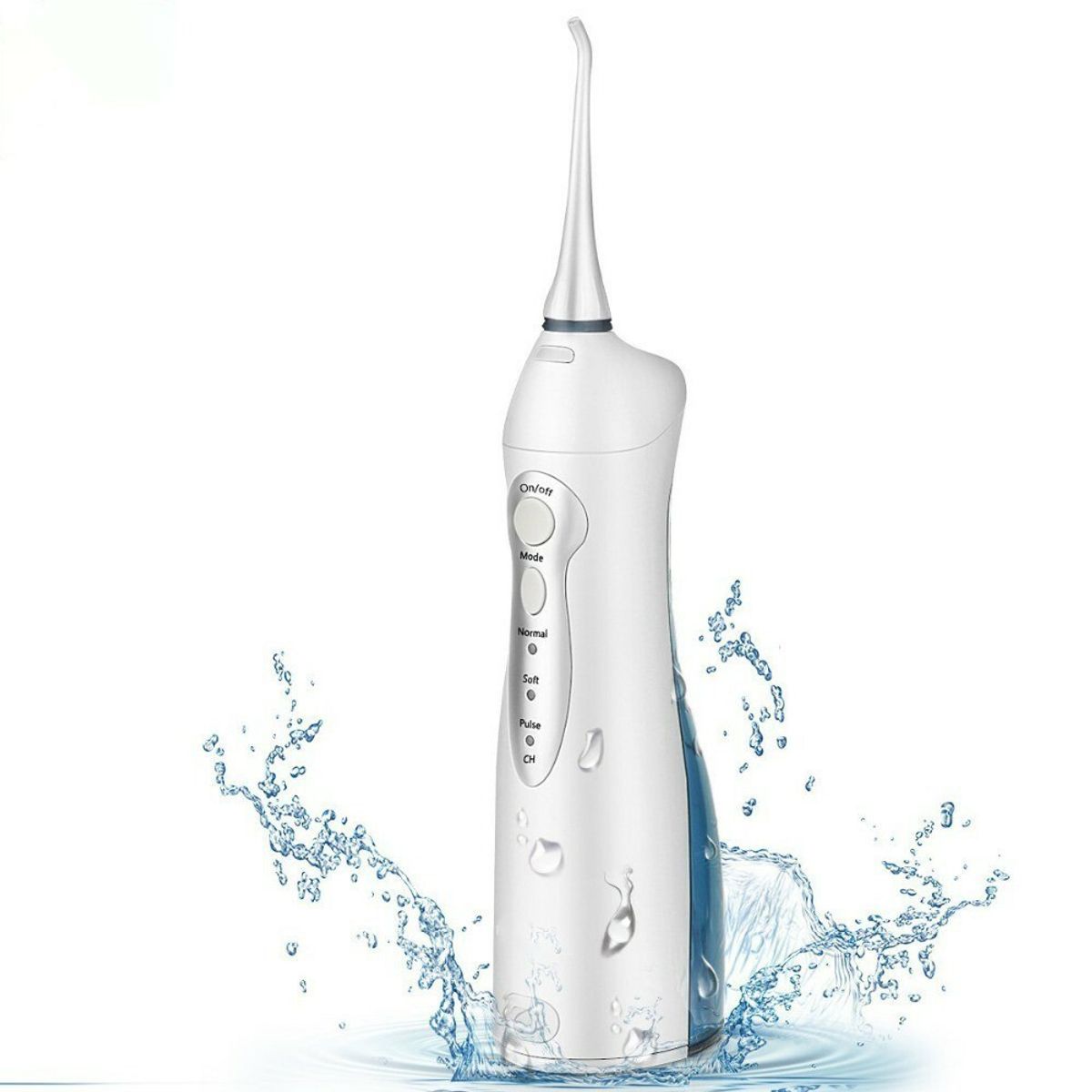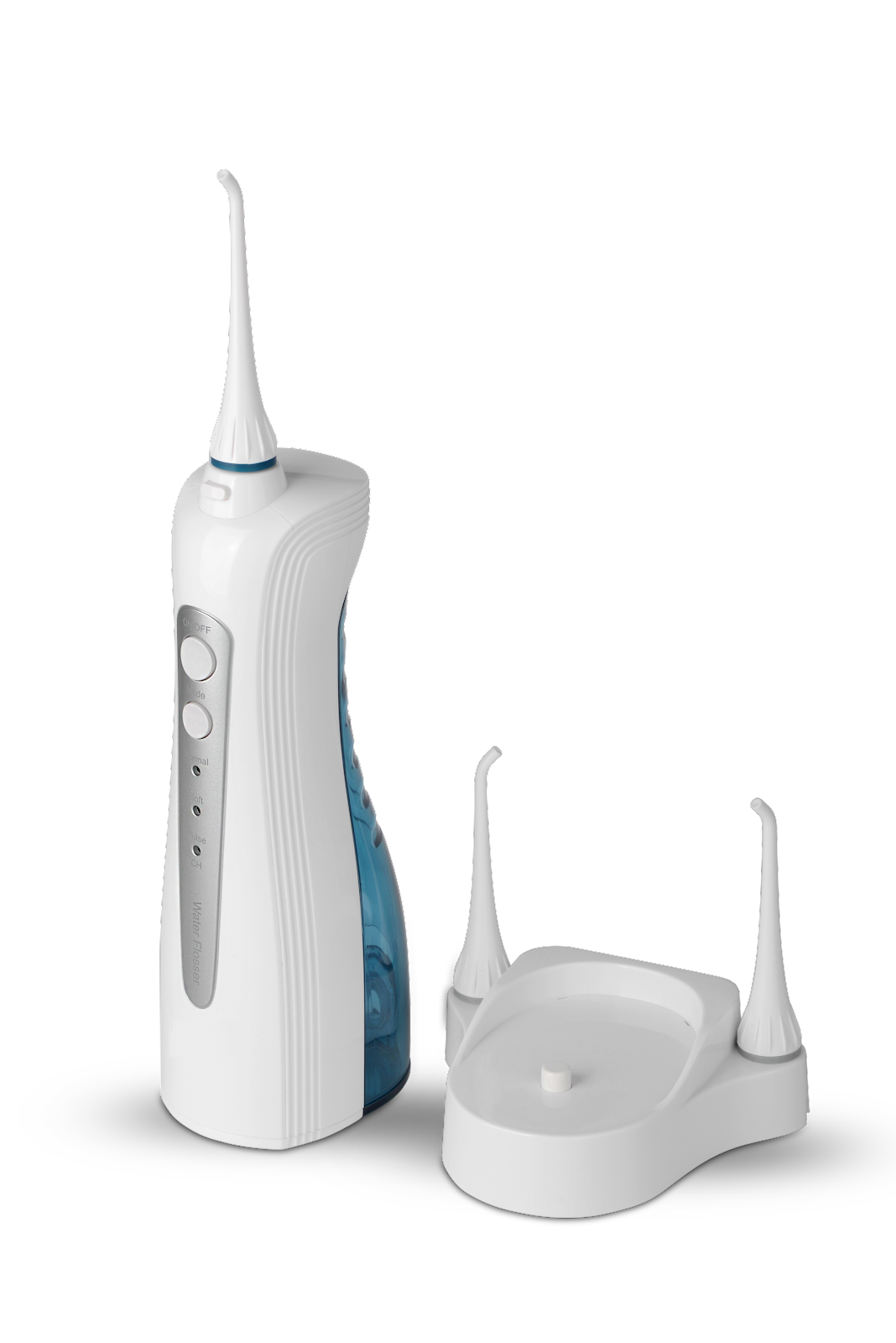
What is a water flosser?
A water flosser, also known as water jet or oral irrigator, is a dental device that has been around since the 1960s but has gained recent fame and popularity among the general public. It is essentially a home dental care device that streams high-pressure pulsating water to dislodge food particles and plaque buildup between teeth and below the gum line. Before getting into greater details in relation to this device, let us first understand the basics of flossing.
Flossing
Now, you have been brushing your teeth twice a day – that’s good. But what about flossing? Have you been doing it as regularly? You may be wondering – what’s the point of flossing? Does it really add that much?
The answer is yes. The primary function of teeth brushing is to remove food deposit and plaque from the surface of our teeth to prevent or reduce the risk of developing dental caries or gum disease. However, toothbrushes are unable to properly reach every part of our oral cavity, in particular, the interproximal areas of our teeth which are the areas between our teeth. And this is where flossing comes into play.
Flossing complements regular teeth brushing by removing food particles and plaque buildup at those “difficult-to-clean” areas such as the proximal surfaces of the teeth and restorations, surfaces of fixed prostheses and areas beneath the pontic of a dental bridge, around orthodontic appliances such as the brackets of braces and around dental implant. It also helps to prevent the formation of calculus and reduce gum bleeding and inflammation. Patients (very) often complain about gum bleeding caused by flossing. Well, that is true in some cases where the patients have been flossing with inappropriate technique and excessive force. But in the vast majority of cases, the underlying reason behind bleeding gums is not flossing, but is instead due to periodontal (gum) diseases. Under such circumstances, not only that flossing does not cause the bleeding, but regular flossing would in fact improve the patient’s periodontal health.
Traditional flossing vs water flossing
Now that we are clear with the importance of teeth flossing, we shall explore the different ways to floss our teeth. Most people are familiar with the traditional way of flossing – which is to wrap a strand of dental floss between two fingers and run it between the teeth and down the gum line.
However, conventional dental floss is bounded by its limitation where it could only reach about 2mm below the gum line. If you have gum disease with periodontal pockets which are deeper than that of a healthy individual (>3mm), regular floss cannot help you clean them. This is where a water flosser comes in handy.
The streams of high-pressure water will blast off the food residue and plaque beneath the gum line. In addition, water flossers also massages and stimulates the gum tissue, thereby bringing better circulation to the gums and keeping them happy and healthy. Do check out Innocare Waterflosser which splashes out 0.6mm ultrafine water flow which is ideal to go between our teeth and beneath our gumline.
Strictly speaking, water flosser is not a replacement for traditional flossing, but many individuals are seeing better effects from using a water flosser in place of flossing altogether, as compared to traditional string floss. Individuals with braces, retainers, dental implants or bridges would especially find it significantly easier to use water flossers to clean their teeth and gum effectively.
How to use a water flosser
The basics of using a water flosser is as follows. Fill the reservoir with warm water. Select and affix a tip to the device. Aim the tip at an area between the teeth and beneath the gum line. Turn on the device and adjust the water pressure accordingly. Move the device along the gumline, cleaning both the front and backside of the teeth to remove any food particles and plaque buildup. When using a water flosser, partially close your lips to minimize splashing and allow the water to flow into the sink.
It is undeniable that using a water flosser is messy, and in fact, a lot messier as compared to using a traditional string floss. However, it is not difficult to master the device and with a bit of practice, you will be able to properly use a water flosser without hassle or causing much mess. Some people even find the process therapeutic or addicting after a couple of uses.
By the way, if you are looking to start using a water flosser for the first time, or if you are a seasoned user thinking of trying a new brand, why not give our Innocare Waterflosser a go? It comes with 3 operation modes which will suit all types of preferences and gum conditions, and one full charge can last you more than a month if used 2 minutes daily. To top that off, the device is also clinically proven to be able to eliminate more than 99.99% of plaques from treated areas.

